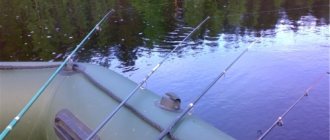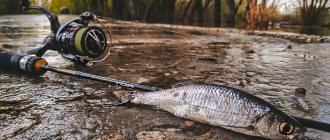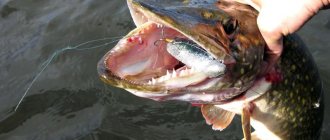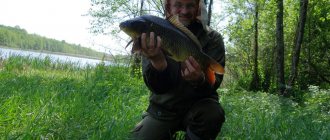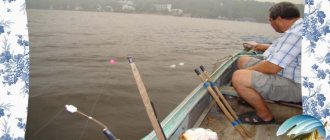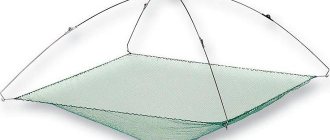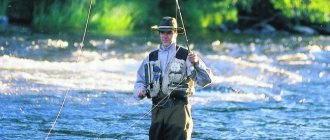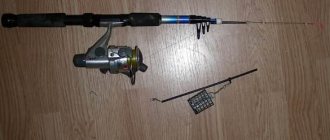Spinning fishing
02 February
Overview of spinning fishing on a pond
Fishing on ponds is of great interest when such reservoirs are paid or located in places remote from densely populated cities. You can catch a solid trophy with a spinning rod. Such ponds are often found:
- - pike;
- - trout;
- - perch.
Predators often choose ponds that are replenished with water from small rivers, springs or streams. They are home to huge specimens that can amaze even a very experienced fisherman with their size. The main thing is to know the peculiarities of catching such prey and understand what equipment needs to be used for this on ponds.
Features of fishing on a pond
Ponds become covered with ice earlier than other bodies of water and thaw later. But the water in them warms up faster than in rivers and lakes. Typically, fish stop spawning in ponds in May. After this, you can catch a large predator using a spinning rod. In this case, the fisherman must take into account the fact that:
- 1. The most active bite is observed in early June. Perch and pike are caught using wobblers and spinners near the shore.
- 2. In mid-June, the water in most ponds begins to bloom. The fish becomes lazy and unpredictable. During this period, you can only count on a catch in the early morning or evening.
- 3. By August, the fry grow up, and active biting resumes. Predators attack small poppers, wobblers, and light jig baits right near the shore. It's easy to see where the pike or perch are. The fish are where the fry fan out across the surface of the reservoir.
- 4. In autumn, the water in ponds cools quickly. Predators go deep. Hunting for them becomes difficult and often fruitless.
Choosing a location and gear
Choosing a place to fish on ponds is not difficult. You just need to take into account some nuances. Medium-sized pike and perch love overgrown reservoirs, where they live permanently. But in order to catch them, you need to be able to make precise casts and select baits that do not cling to aquatic vegetation. Beginners can count on successful fishing in the following ponds:
1. In the spring, when the grass has not yet grown. For a couple of weeks, pike have been biting well on poppers, walkers, and light spinning spoons. The wiring must be done over the algae. 2. In autumn after algae decline occurs. The predator gathers in flocks that chase small things throughout the pond. The fish readily bites on any bait.
In order not to be left without a catch on overgrown ponds at other times, you need to check all the windows and corridors formed among the water thickets. If the reservoir is not covered with vegetation, you should look for fishing areas:
— on the edges near flooded riverbeds; - where river tributaries are located; - in small bays; - in holes, on shallows; — in snarled areas; - on the islands; - where the bottom topography changes.
Selection of spinning rod and equipment
You need to choose a spinning rod for fishing on a pond, taking into account the characteristics of the reservoir and fishing technique. Fishing rods are divided by length, action, material of manufacture, range of tests. If the pond is surrounded by trees, bushes, or overgrown with reeds, it will not be possible to make long casts. In this case, rigid forms with a fast action are suitable. For open water, you can use models up to 2.7 meters long with a slow or medium action.
Now spinning rods are made from:
- - fiberglass;
- — composites;
- - carbon fiber.
The first option is the cheapest, heaviest, and most durable. But such forms have a low degree of elasticity, and their sensitivity is lower. The composite material consists of varying percentages of glass and carbon fiber. Models made from it are low cost and have medium hardness. The most expensive among such fishing rods are spinning rods made of carbon fiber. These are lightweight rods with high elasticity, excellent porosity, and excellent rigidity. However, they cannot withstand strong impacts and therefore require careful handling. If you have little experience working with spinning rods, it is better to first take a model made of composites. Fiberglass blanks will not allow you to practice your casting technique. They quickly tire your hands.
The rod test is determined by the type of fish you plan to hunt. For fishing on a pond, baits weighing from 2 grams to 40 grams are sufficient. When purchasing a form, you need to pay attention to the quality of the assembly, rings, and reel seat. For ponds, it is advisable to buy light or medium class models. Forms from the heavy category are not needed on such reservoirs.
Tactics and techniques for fishing in an unfamiliar body of water
In theory, everything is simple - you go to a pond, pay for fishing (or don’t pay if you end up in a wild pond), find a good place, lay out your gear and start fishing.
However, traveling to an unknown body of water without prior reconnaissance can be a waste of time and nerves. In the end, every angler expects results, even if he fishes only for recreational purposes.
Whether fishing in a new place will be successful depends not only on the presence of fish in the water, but also on your preparation. How to explore an unknown body of water and what to look for?
Conduct preliminary reconnaissance before fishing. You don't need to take a fishing rod with you the first time (although it can be useful for other purposes) because you should first assess your chances of finding a good spot. Take a short walk around the pond, looking for typical signs of fish feeding: movements near the surface of the water (so-called exits), collection of leaves in one place, the presence of water lilies and air bubbles, unnatural movement of coastal grasses or even smacking (characteristic sounds of carp).
Read: Why do you need fishing line insurance?
A fishing spot can be considered potentially favorable if it provides fish with good feeding grounds. If you see a reed or a tree that has fallen into the water, or water lilies floating on the water, you have probably found a great place to catch carp. These fish love to hunt snails and freshwater mollusks, so their likely presence in a given place promises a successful catch.
Studying the bottom of the reservoir, that is, checking the depth and relief, will help you choose a place to cast your fishing rod. How to do it? You can use an echo sounder, a spinning rod, or a float rig with a weight. On large bodies of water, a boat is useful. The weight of the depth gauge must match the current speed. To explore a pond or lake, you will need a weight of only a few grams; to explore the river bottom, it is better to choose a heavier one (up to 50 g).
To explore a land-based fishing spot, position yourself in one spot and lower the rig as close to the shore as possible, then gradually cast it further and further, varying the depth of the rig.
By checking the fishing spot in this way, you will not only determine the appropriate depth for casting gear, but also the presence of vegetation and even the type of bottom (muddy, rocky, sandy). Based on this information, it is easier to identify potential fish feeding areas and avoid problems with possible obstacles.
Read: What to do when small fish prevent you from catching large ones
If you already have a spot and know exactly where to put your gear, all you have to do is lure the fish. And, if you have the opportunity to do it in advance, start luring a few days before the actual fishing: first add more food (orange-sized bait balls, and a few handfuls of corn), then gradually reduce the portions. The point is that the fish, becoming attached to your place, do not “overeat” - since uneaten bait, sinking to the bottom, rots, which contributes to the deterioration of water quality.
If you do not know which species predominate in the water, use universal bait or standard homemade food (corn, bread, wheat) without significant smells or aromas. Also remember that small portions tempt smaller fish, so if you want to target larger specimens, be sure to make large bait balls and start feeding the fish 2 weeks before fishing.
Now you need to take care of the right fishing equipment. Most fishing gear does not require special equipment, but some require special conditions that interfere with normal fishing. For example, rocky edges make it difficult to drive in support, so it's best to bring a Rod Pod or tripod. If there are small islands on the lake, it is worth using a boat, which will give you access to fish hunting for snails and shellfish. When fishing from a boat on a large body of water, it is worth buying or renting a fish finder, which will help you find schools of fish more easily.
Read: Electronic fishing scales
Before going fishing, be sure to check the weather conditions so that rapidly changing weather does not prevent you from fishing.
For safety reasons, it is recommended not to fish from a boat on a completely unknown body of water.
How to catch pike on a pond with a spinning rod
Pike is one of the most common predatory fish in Russia. Adults feed on fry, frogs, and waterfowl. In recent years, pike have begun to be artificially grown in paid ponds. Among fishermen, such trophies are considered valuable, since catching them requires dexterity and strength.
Where to look for pike on a pond
On ponds, pike choose:
- - snags;
- — areas with differences in depth;
- — edges near the shore;
- - thickets of aquatic vegetation.
The predator begins to be caught from the upper reaches of the pond at shallow depths. There are plenty of hiding places and plenty of fish here. In summer, you need to come to the pond early in the morning before sunrise. The most effective pike fishing technique in this case is a jig with a smooth retrieve. Pike does not react to sudden jumps of the bait along the bottom. When the sun starts to rise, you can switch to wobblers, and after the air warms up well, to poppers.
Who can you hook up with?
The choice of fish to add to reservoirs depends on the purpose of the pond, the goals set and the personal preferences of the owner. Today, you can order almost any type of fish from special companies involved in stocking reservoirs with fish.
Before launching this or that type of fish, you need to prepare suitable conditions for it. There are fish that are very demanding on water quality, its purity and oxygen content. Let's look at the types of fish that are especially actively used when stocking reservoirs with fish.
Silver carp
This is a herbivorous freshwater fish from the carp family, which is valued for its fast growth and tasty meat. Silver carp is a natural ameliorator. Adult fish, eating phytoplankton, clean water bodies. Silver carp is a large fish, it grows up to 1 m in length, reaching a weight of 20-30 kg. Silver carp is recommended for stocking:
- White. The head of this fish accounts for up to 20% of the body weight. Feeds on phytoplankton.
- Motley. This silver carp has an even larger head, making up almost 1/2 of its body weight. In addition to phytoplankton, it also eats zooplankton, so the meat of bighead carp is superior in taste to other varieties.
- Hybrid. The head occupies 15-20% of the body. It is characterized by particularly fast growth.
Only silver carp, of all freshwater fish, has fat that lowers cholesterol in the blood. There is even a diet based on silver carp, in which they eat 1 kg of fish per day - to lower blood pressure and lower cholesterol.
Yearlings weighing 5 g or more are suitable for stocking. The population rate is from 20 to 150 pieces per hectare.
It is recommended to grow silver carp together with grass carp in carp ponds. Growing these fish together with carp significantly increases the productivity of ponds.
White amur
Grass carp are often called "grass carp" and are indeed a member of the carp family. It has a high growth rate - about 10 cm annually. Large fish reach a length of 1 m 20 cm, and their weight is 30-32 kg. This type of fish is profitable because it quickly gains marketable weight:
- 2 years – 800 g;
- 3 years – 1500 g;
- 4 years – 3200 g.
Grass carp is herbivorous, feeding on aquatic and terrestrial vegetation. If there is not enough grass in the pond, it is specially added to the water. Young animals feed on bloodworms and crustaceans, and, having matured, switch to plant food.
By destroying grass, grass carp prevents the breeding of mosquitoes - this creates comfort for people relaxing near a pond or fishing.
Grass carp eats as much grass every day as it weighs. If the water warms up to 25-30°C, then he eats even more. But when the water temperature drops below 10°C, grass carp does not eat at all.
Advantages of breeding grass carp:
- rapid weight gain;
- tasty and nutritious meat;
- undemanding to oxygen content;
- resistance to infectious diseases;
- purifies water.
It should be taken into account that the “reclamation” abilities of grass carp appear only in the third year of its life in the pond. The recommended stocking rate is 500 yearlings per 1 hectare.
Trout
Trout is a valuable fish of the salmon family. This freshwater fish with light pink flesh has a laterally flattened body, so it appears a little flat. Trout has delicious meat and is a valuable trophy for fishermen. Trout fishing is a special type of sport fishing, popularized in many countries.
Trout is a schooling predator. Eats small fish, rodents, chicks. In nature, the standard size of river trout is 25-35 cm, and the weight is 400-1600 g. Individual individuals reach a length of 0.5 m, weight - 1-2 kg, record holders grow up to 5-6 kg.
Three types of trout are usually bred in ponds:
- rainbow;
- lake;
- golden
When reared artificially, trout can easily grow up to 6-8 kg. To achieve such indicators, breeders feed the fish with special feed.
Trout is demanding on the quality of water - it must be cold, clean and flowing, with a temperature of 14-20°C. The pond should have shaded areas, as trout do not like illuminated areas.
Trout definitely need air, so the fish periodically floats to the surface to swallow it. If in winter the reservoir is covered with ice and there is no way out, the trout may die. Stocking with trout is recommended in the summer. The stocking rate is 500 yearlings per 1 hectare.

crucian carp
Crucians belong to the carp family. This fish is very common in domestic reservoirs. Crucian carp is a tempting fishing object and an excellent culinary product. Two types of crucian carp are especially popular - gold and silver, they are usually used for stocking.
Crucian carp is undemanding to water. It is able to live in bodies of water with stagnant water and minimal oxygen content. The fish is resistant to harsh winter conditions - it spends the winter buried in mud. In nature, golden carp grows up to 50 cm in length, weighing up to 3 kg, silver carp - 40 cm in length, weighing 2 kg. Unlike carp, crucian carp do not have whiskers. This is the most hardy and unpretentious fish, which is found everywhere - in ponds, lakes, peat quarries, mud pits.
When artificially bred, crucian carp do not grow to such sizes, but they are attractive:
- survivability;
- undemanding to environmental conditions;
- unpretentiousness to food.
If you grow crucian carp from fry, then in 2 years the weight of the fish reaches 250-300 g. But usually fingerlings are used for stocking. Occupancy is carried out on the basis of: for every 25 sq. m – 20 fingerlings. Before introducing fingerlings into a pond, you need to wait for the water to settle in it and for it to fill with microflora and fauna, which will become a breeding ground for crucian carp.
You can learn more about breeding crucian carp at home here.
Carp
Carp is an omnivorous freshwater fish that is in high demand among consumers due to its tender, tasty meat. It is bony in places, but this drawback pales in comparison to the numerous advantages of carp. This fish eats a lot and grows quickly. Everything that comes across is eaten - reed shoots, fish and frog eggs, worms, crustaceans, insects. They can even eat their own fry. Dependence of weight on age:
- fingerlings – 250 g;
- two-year-olds – 450 g.
The weight of commercial carp is 1250-1500 g. Length is 39-41 cm. It can live in both fresh and brackish water. Carp is a cultivated form of carp, which it has surpassed in endurance and fertility. For stocking, you can use any of the existing varieties of carp:
- Scaly. His entire body is covered with scales. They are distinguished by high adaptive abilities. Omnivorous and unpretentious.
- Mirror. The body is covered with large scales, but in separate places - at the dorsal fin, at the tail and on the sides. It is more demanding when it comes to feed - it loves shellfish and cereals.
There are also naked carp - no scales at all, and framed carp - it has one or two rows of scales on the back and belly.
It is recommended to stock the following reservoirs with fish:
- Larvae - 10-70 thousand per 1 hectare.
- Yearlings - 50-150 pieces per 1 hectare.
- Two-year-olds - 600 pieces per 1 hectare.
Sterlet
Sterlet is a valuable commercial fish from the sturgeon family. An attractive object for artificial breeding. The marketable weight of adults is 0.5-2 kg. Body length is 40-60 cm. Some specimens grow up to 6-7 kg or more.
During the day, the sterlet lies at the bottom, and comes to shallow water at dusk to feed. Actively feeds only during the warm season - until mid-October. Then, gathering in flocks, they go into wintering pits.
Sterlet is considered the most delicious fish among all sturgeons. They, in comparison with sturgeon, are quite precocious - they can reproduce from the age of 8, males mature by 4-5 years.
When breeding sterlet, one should take into account its demands on water quality. She needs bodies of water with clean, cool and fast water, saturated with oxygen. A small amount of contamination (chemicals, household waste, fertilizers, etc.) is enough for the livestock to suffer. Sterlet is also demanding on temperature conditions. The water should maintain a temperature of 20-21°C. Oxygen saturation – from 5 mg/l, no less.
The stocking density of two-year-old sterlets is 1500-2500 pieces per 1 hectare.
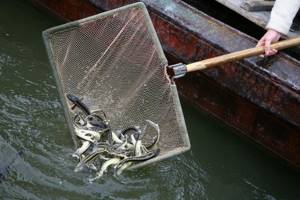
Black cupid
Black carp is a rare fish imported from the Far East. It reaches a length of 130 cm and a weight of 50 kg. This is a fish of the carp family, characterized by a dark back color.
Young black carp feed on zooplankton, and later on insect larvae. In the second year of life, cupid feeds on mollusks. This is his favorite food, but he can also eat other aquatic organisms, and when artificially bred, he eats feed well. True, when fed with compound feed, the fish's fat percentage increases and it grows more slowly. Puberty is at 6-8 years of age, when the weight of black carp reaches 18 kg.
This large fish is especially interesting as an object of sport fishing. Fingerlings are raised in a polyculture with herbivorous fish and carp. The population density of black carp is 50,000 fingerlings per 1 hectare.
Som
Common catfish, also known as river or European catfish. This, after the beluga, is the largest fish in freshwater bodies. Catfish is a predator, it has no scales, and its meat is fatty and tasty. This is one of the most coveted trophies for any fisherman.
The length of the catfish’s body reaches 5 m, weight – up to 350 kg. It happens even more - up to 500 kg. This predator feeds on fish, frogs, and other amphibians. Catfish perform “sanitary” functions in reservoirs. The ponds in which catfish live are distinguished by the purity and freshness of their water.
Catfish are an excellent object for fishing. They often stock reservoirs with fish for sport or recreational fishing.
It is recommended to stock reservoirs with crucian carp, perch, and roach with catfish. The stocking rate is 30-50 fish per 1 hectare.
Loach
The loach has an elongated, scaly body, slightly compressed from the sides. The length of the loach reaches 15-30 cm. In reservoirs, the loach eats processed food remains - it performs high-quality sanitary functions. A loach thrown into a pond serves as a natural “barometer” - before the rain, the fish repeatedly floats to the surface.
The loach is unpretentious - it can live in the dirtiest or swampiest water. But bad water negatively affects its growth and reproduction rates. The ideal place for breeding loaches is a clean artificial pond.
The loach is not placed in ponds with crucian carp, tench and carp, as it eats their eggs. It is also not bred in ponds with predators; if there is a pike in the pond, it will eat all the loaches, they are a tasty prey for it.
Loaches are voracious. They eat larvae, bottom mollusks, worms, bloodworms, and raw meat. During the winter, loaches hibernate. To prevent the fish from suffocating in winter, holes are cut in the ice.
Pike
Pike is a freshwater predatory fish. The common pike lives on the territory of Russia - it is a commercial fish, a pond nurse, and an object of sport fishing. Pike grows up to 1.5 m in length and maximum weight is 35 kg. In life, specimens larger than 1 m and heavier than 8 kg are rarely found.
The grey-green body is torpedo-shaped. Pike is aggressive and voracious, feeding on small fish - crucian carp, roach, rotan, as well as worms, mice and even waterfowl. Stocking pike is useful in non-water bodies filled with trash fish.
A dead body of water is one in which fish die in winter due to lack of oxygen.
Recommended stocking rate for pike:
- for yearlings – 10-20 pieces per 1 ha;
- for larvae - 150-300 pieces per 1 ha.
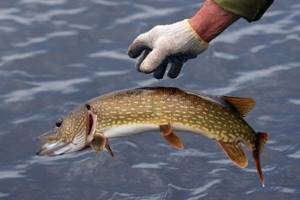
Buffalo
This fish comes from America. In the early 70s. Three types of buffalo were brought to the USSR - largemouth, smallmouth and black buffalo. In appearance they are all similar to carp. Buffalo, like carp, grow quickly. This is a large fish, reaching 45 kg.
When grown in artificial ponds, it feeds on large zooplankton. If there is a lot of natural food in the reservoir, fingerlings grow to 200-500 g, two-year-olds weigh 1500-2000 g.
Culinary experts say that buffalo is tastier than carp. Thanks to its omnivorous nature, early maturity and unpretentiousness, this fish is a promising object for fish farmers. It is recommended to stock reservoirs with fish at the rate of 1000-1500 yearlings per 1 hectare.
Zander
This predatory commercial fish is valued for its lean, nutritious meat and delicate taste. Pike perch prefers bodies of water with warm and clean water. It has an elongated body of a dirty green color, spiny fins and a powerful, toothy jaw.
If the young are well fed, and they eat the fry of other fish, then in a year they grow up to 800 g. For 1 kg of weight, pike perch requires 3.3 kg of fish - this is less than pike and perch. Kuban pike perch grow especially quickly, reaching maturity by 3-5 years. Fish living in northern climates take longer to grow.
It is recommended to stock water bodies with pike perch where there is a lot of trash fish - roach, perch, etc. It is recommended to stock fish at the rate of 10-100 thousand larvae per 1 hectare.
Sturgeon
Sturgeon is a valuable freshwater fish. She has an elongated body and an elongated, pointed head. There are two types of sturgeon - Russian and Siberian. The latter has better survival rate, so it is more profitable to breed it. But Siberian sturgeons have a lower growth rate than Russian sturgeons.
For this fish it is necessary to create ideal conditions - clean water, high oxygen content, favorable water temperature. In summer – 18-25°С, but not higher than 30°С, in winter – 10-11°С.
In nature, sturgeon grow up to 2 m, weighing up to 200 kg. In ponds they serve as excellent biological orderlies - they eat invertebrates, larvae, frogs, etc.
Difficulties of breeding sturgeon:
- Sturgeons do not tolerate fungal infections that affect the gills. There is also a high mortality rate among fry. One fish can infect all inhabitants of a pond.
- In order for a sturgeon to grow and produce offspring, its diet must contain 80% protein food. If the sturgeon eats plant food, this will negatively affect its reproductive abilities.
- Females become sexually mature only at the age of 10-20 years.
